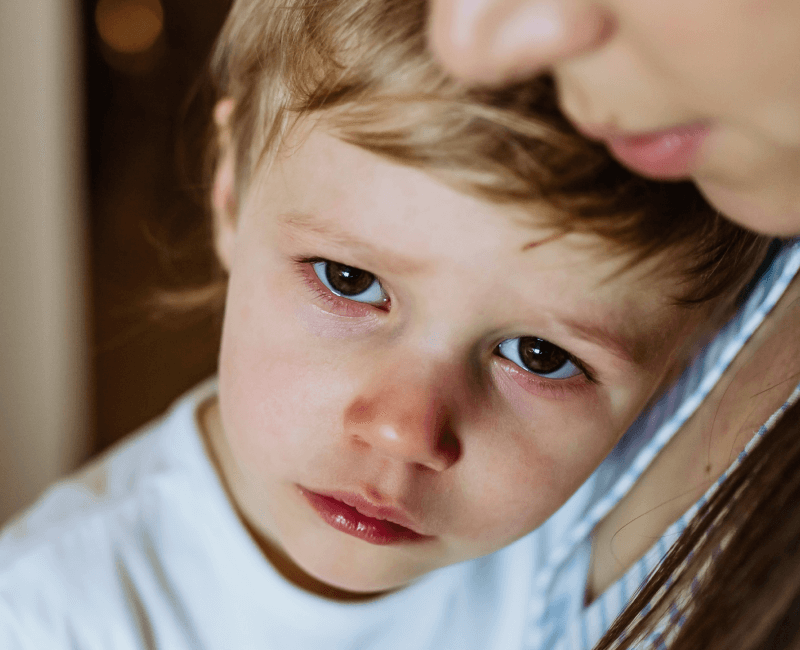Think about this for a moment, 60% of all communication is nonverbal. This means the body language we use, the facial expressions, the gestures are all communicating for us, even when we are not saying anything.
We all do it, the lengthy yawn during a long meeting; the glance at your watch when someone grabs you just as you are about to leave work; the arms folded tight across the chest when you receive critical feedback. This communication is often subconscious but nevertheless communicates a clear message to the other person – without words! Truth is, we may realise a few seconds afterwards that these could be received as “negative” forms of communication, but we are often not aware of initiating them.
Both adults and children use behaviour to communicate throughout each moment of every day.
Perhaps unsurprisingly, children rely heavily on nonverbal communication. Tantrums, biting, hitting and screaming are all common happenings during the difficult period of raising a toddler. They are trying to communicate with you through behaviour whilst they are developing their understanding and use of verbal language.
More often than not, this challenging behaviour manifests out of frustration at either not understanding a situation or being unable to verbally express their wants, needs and feelings. As children get older and consequently develop appropriate vocabulary, sentence structure and social skills, these high level behaviours reduce.
But here’s the thing, for children with speech and language delay or disorder, these inappropriate methods of communication usually continue. Often language difficulties and the anxiety surrounding interaction are at the root of a child’s behaviour.
The Link Between Behaviour and Communication
During my time as a Speech and Language Therapist I have worked with many children who have displayed challenging behaviour. I find the link between between language and behaviour fascinating and have dedicated my working life to children who communicate through alternative means.
I have been lucky enough to work in several Pupil Referral Units (PRU)s and a young offenders institute (YOI). Many of these children present with aggressive or antisocial behaviour, limited attention, impulsiveness, and a general inability to cope with daily routines.
The Evidence
Shockingly as many as 40% of children with SEMH may have undiagnosed communication problems. In Wetherby YOI research conducted by Gregory et al found that around 60% of inmates had speech, language and communication needs. Surely it cannot be a coincidence that these young people who have developed extreme behavioural problems, also suffered from communication difficulties?
75% of young people who have Social, Emotional and Mental Health (SEMH) problems also have communication problems (Heneker, 2005)
What Does This Look Like?
Picture This…
Connor is 9 years old and struggles to attend school everyday. When he does make it in he is often late, usually forgetting something such as his lunch or PE kit.
Today is Wednesday. Wednesday morning means Literacy. Connor sits down at his desk and immediately begins to swing back and forth on his chair. As the teacher starts to introduce the topic to the class she spots Connor picking at the “classroom rules” poster which had been stuck to the table top. She addresses him in front of the class; telling him “stop fidgeting, and focus”. Connor stops peeling the edges of the poster, but continues to find it difficult to sit still. His brain is trying to work out what the word “focus” means.
Before he knows it the teacher has finished speaking and has started to hand out worksheets. He glances around the room at his peers picking up their pens to write and the usual wave of anxiety creeps over him. What was it he needed to do? He tries to read the instructions on the top of the worksheet but the words are too long and make no sense. He can feel the eyes of his classmates and the teacher burning into the back of his head and he begins to pick at the poster again, this time more vigorously.
The teacher walks over to Connor and asks him if he knows what he needs to do. He stares at the worksheet, desperately avoiding her gaze and mumbles “yes”. “Explain it to me then!”, the teacher asks. Connor mumbles again, “shut up, I don’t care.” “Excuse me? Look at me when you are speaking!!” responds the teacher. At this point Connor kicks the chair out from underneath him, rips up the worksheet and yells at the teacher “shut up and f**k off”. Connor is ordered to go and sit in the corridor. Once out of the classroom, his anxiety levels begin to drop and the red mist clears.
I’m guessing many of you have probably known a Connor or two. Now let’s have a look at what could be lying behind some of these behaviours…
Behaviours and their Link to Language and Communication:
Being late to school and forgetting things
- Connor may be unable to regulate his sensory needs. Often children fidget to help them concentrate.
Not following teacher instructions
- Connor did not know what “focus” meant.
- He was unable to retain instructions in his working memory.
Not knowing what work to do
- Connor had difficulty asking for clarification.
- Connor has reading or visual difficulties.
Avoiding eye gaze
- Connor may find direct eye contact to be uncomfortable.
- He is very self conscious of not being able to complete his work which makes social interaction more difficult.
Being rude
- Connor may have difficulty using different language for different situations. For example using the same language with friends outside of school as he does with teaching staff.
Using swear words
- Connor may have poor or limited vocabulary. Often swear words replace adjectives.
Reduced anxiety when in the corridor
-
Now Connor has been removed from a situation in which he felt uncomfortable, he is able to relax and begin to process what happened. He may develop this way of being removed from an anxious situation as a learnt behaviour.
Thank You for taking the time to read this article and I hope it has been useful! If you take one thing away from the blog then please let it be to refer any pupils who present with challenging behaviour to a speech and language therapist. By school and therapist working together, we will hopefully be able to help hundreds of Connors.
- General Speech & Language (24)
- Speech and Language Therapy (21)
- Social Communication (11)
- Speech Sounds (7)
- Autism Support (4)
- Language Delay/Disorder (3)
- SEMH (3)
- Safeguarding (3)
- AAC (2)
- Autism (2)
- Relationship Issues (2)
- ADHD Support (1)
- Absenteeism (1)
- Classroom Behaviour (1)
- Cleft Lip/Palate (1)
- Counselling (1)
- Funding (1)
- General mental health (1)
- Generalised anxiety (1)
- MATs (1)
- OCD (1)
- Phobias (1)
- Primary Schools (1)
- SENCOs (1)
- School Issues (1)
- Secondary & Sixth Form Schools (1)
- Stammering (1)
- Trauma (1)
You may also like
These related stories

The connection between language and mental health difficulties

Online Speech & Language Services Guide
